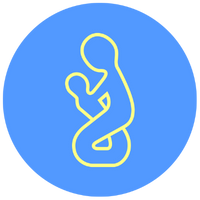Environmental Scans
M&IHC’s environmental reviews and landscape analyses involve a mix of comprehensive desk research and stakeholder interviews. These environmental scans inform strategic programmatic decisions and unify collective understanding of global health topics.
Multiple Micronutrient Supplements
M&IHC researched and wrote a comprehensive landscape analysis for the Micronutrient Forum on global multiple micronutrient supplementation (MMS) titled “A Landscape Analysis of MMS Legislation, Activity, and Priorities.” M&IHC’s iterative process involved facilitating 23 virtual key informant interviews, summarizing a detailed review of journals and grey literature, conducting a systematic review of global nutrition policies, and writing two country case studies. This 58-page document was used as a pre-read for a M&IHC facilitated stakeholder consultation and was later shared widely with the nutrition community.
Maternal & Neonatal Health & Nutrition
M&IHC performed an environmental review for Nutrition International which identified key stakeholders who conduct community-based maternal and neonatal health (CBMNH) and nutrition training globally (with a focus on Ethiopia, Kenya, and Sénégal). After developing a list of relevant organizations and individuals, M&IHC systematically contacted stakeholders for information which was reviewed and analyzed into an environmental scan report. This report was then paired with a comprehensive literature review on CBMNH globally. From there, M&IHC designed a roadmap outlining several pathways for next steps in the analysis of global CBMNH training programs.
Malaria-Related Behavior in the Greater Mekong Subregion
M&IHC conducted an exhaustive literature search and retrieval for PSI/Cambodia exploring malaria-related behaviors among mobile and migrant populations, including forest goers. This included reviewing both published and grey literature, emailing multiple stakeholders, and conducting one interview. The literature search and retrieval materials were compiled into 38 pages. This research was then synthesized into a 40-page report that included a summary of the literature and documented search strategies highlighting the exhaustive nature of the multi-level research methods. The report also identified key findings, gaps in current knowledge, and recommended areas for further research.
Sexual & Reproductive Health Stigma
In collaboration with Women First Digital and PSI’s Women's Health Project, we executed a comprehensive environmental scan to understand, develop, and evaluate sexual and reproductive health (SRH) stigma reduction campaigns and interventions. This multi-step research process involved conducting 15 interviews and desk research. We identified SRH stigma reduction resources, interventions, and evaluation scales. Ultimately, the compiled information formed a SRH stigma resource table and a report.
Micronutrient Forum: Global Child Diets
M&IHC collaborated with the Micronutrient Forum to support a global child micronutrient diet alliance. M&IHC contributed to this through conducting a landscape review to identify relevant stakeholders and key actors, along with an overview of their activities and priorities. Key informant interviews with leaders in the micronutrient field were critical to this process. The landscape review included a theory of change, a joint statement, a list of critical barriers and enablers, a list of current and planned activities for participants, and a list of skills and knowledge gaps inhibiting progress in creating evidence-based interventions. In addition, M&IHC synthesized key documents on complementary feeding, highlighting specific priorities, challenges, gaps in knowledge, and success factors. This research and facilitation resulted in the “Synthesis of Evidence, Knowledge Gaps, and Priorities for Food-Based and Home-Fortification Interventions”.
Image Source: © UNICEF/UN0342483/Keïta






